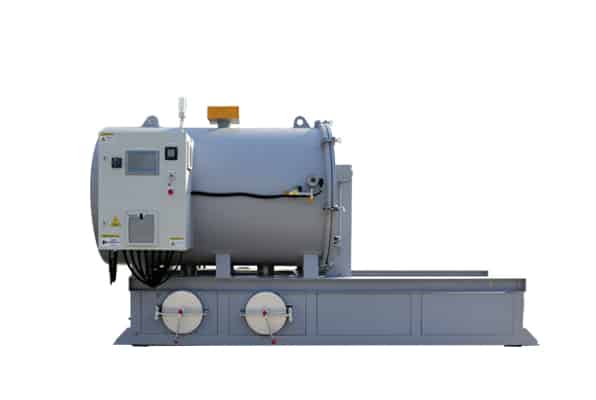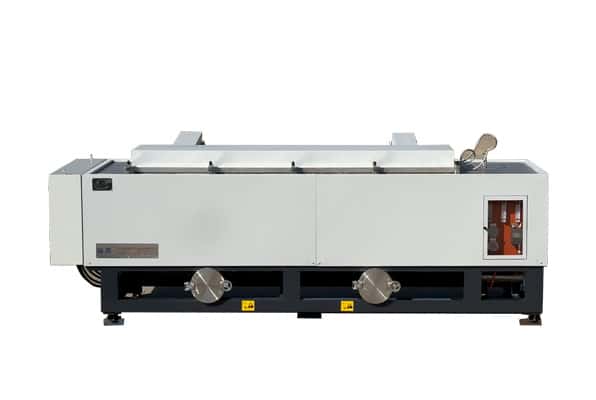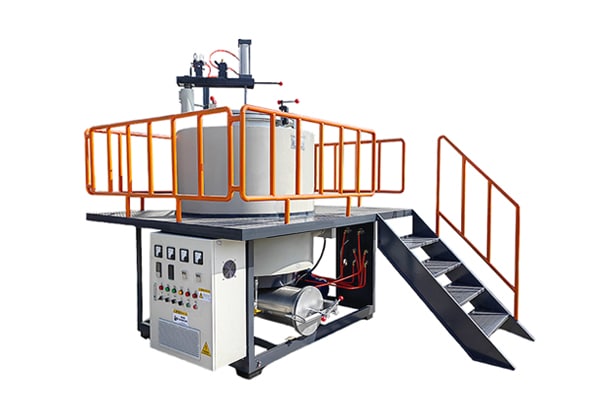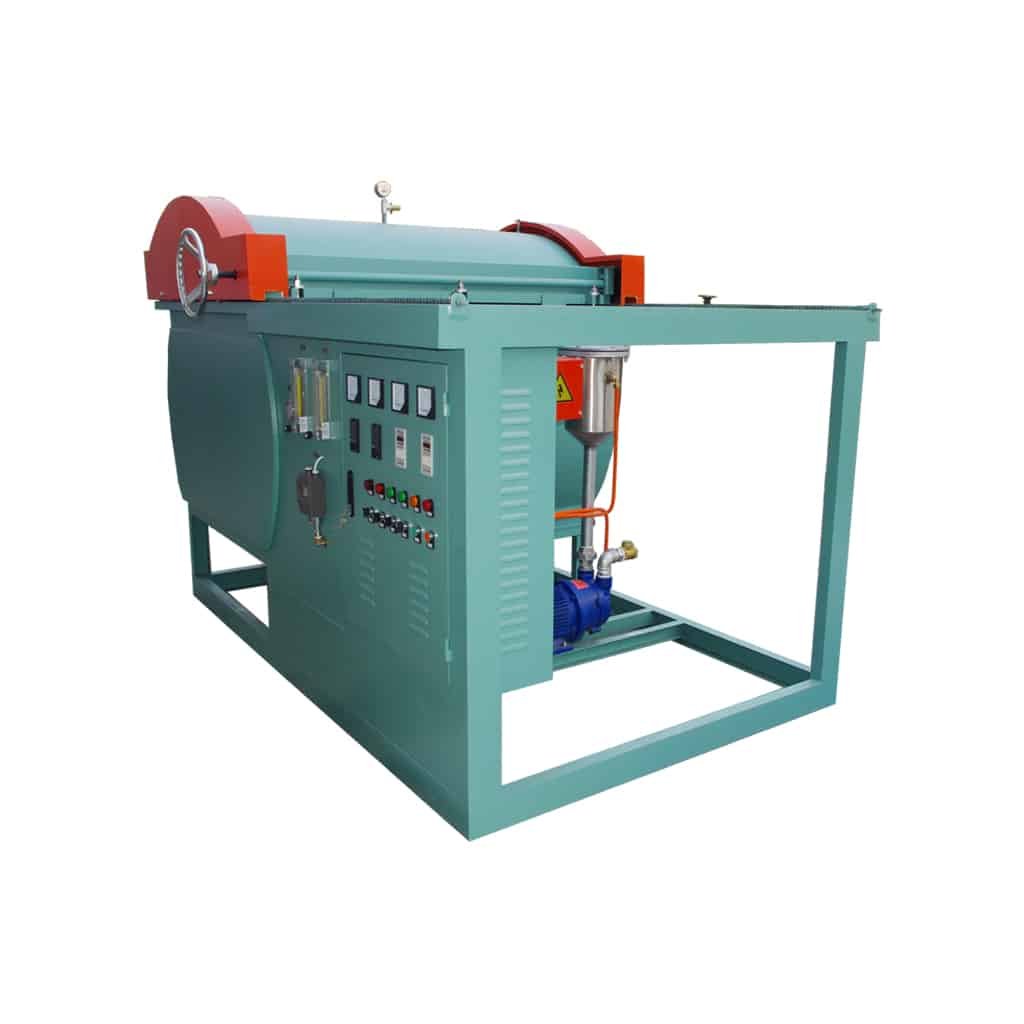Tungku pembersih vakum, https://8ruiyan.com/en/all-vacuum-cleaning-furnaces/as an efficient and eco-friendly cleaning solution, is increasingly becoming the industry’s preferred choice.
In the polymer processing industry, production equipment (such as spinnerets, extruder screws, and molds) accumulates residual polymers, additives, or carbon deposits during use, affecting product quality and production efficiency. Traditional cleaning methods (such as chemical cleaning or incineration) suffer from environmental pollution, inefficiency, or potential damage to workpieces.
This article provides a detailed introduction to the working principle of vacuum cleaning furnaces, their four main types (horizontal, cabinet, vertical, and pit-style), and their advantages and disadvantages, helping you select the most suitable cleaning solution.
Working Principle of Vacuum Cleaning Furnaces
Vacuum cleaning furnaces utilize high-temperature pyrolysis in a vacuum environment, breaking down polymers into small volatile molecules under oxygen-free conditions, which are then evacuated by a vacuum pump, ensuring thorough cleaning. The core principles include:
- Oxygen-free environment: The vacuum state (typically 1~100 Pa) prevents polymer oxidation and combustion, minimizing residual ash.
- Thermal cracking reaction: Heating to 300~500°C breaks polymer molecular chains, decomposing them into gases and minimal residues.
- Volatile removal: The vacuum pump continuously extracts cracked gases, ensuring complete cleaning.
The entire process is flameless and chemical-free, making it environmentally friendly and non-damaging to workpiece surfaces.
Four Types of Vacuum Cleaning Furnaces and Their Pros & Cons
1. Horizontal Vacuum Cleaning Furnace
Features: The furnace body is horizontally arranged, with rail or cart loading, suitable for elongated workpieces (e.g., screws, molds).
https://8ruiyan.com/en/all-vacuum-cleaning-furnaces

Advantages:
- Ideal for large workpieces, such as extruder screws and long molds.
- Easy loading, allowing batch processing with carts.
- Uniform temperature distribution, suitable for precision cleaning.
Disadvantages:
- Large footprint, requiring significant workshop space.
- Higher energy consumption, with longer heating times.
Aplikasi: Cleaning large components in the chemical fiber and plastic extrusion industries.
2. Cabinet Vacuum Cleaning Furnace
Features: Compact cabinet-like design, suitable for small to medium-sized workpieces (e.g., spinnerets, filter cores).
https://8ruiyan.com/en/all-vacuum-cleaning-furnaces/

Advantages:
- Space-saving, ideal for workshops or laboratories.
- Simple operation, with high automation.
- Fast heating, lower energy consumption.
Disadvantages:
- Limited capacity, unsuitable for oversized workpieces.
- Higher maintenance costs, requiring regular sealing system checks.
Aplikasi: Precision parts and laboratory sample cleaning.
3. Vertical Vacuum Cleaning Furnace
Features: Vertical structure with top or side loading, suitable for tall workpieces.
https://8ruiyan.com/en/all-vacuum-cleaning-furnaces/

Advantages:
- Compact footprint, ideal for space-constrained factories.
- Efficient thermal convection, better energy savings.
- Suitable for tubular or columnar workpieces (e.g., filter cores, molds).
Disadvantages:
- Slightly complex loading/unloading, requiring hoisting equipment.
- Potential uneven bottom temperature, necessitating optimized heating systems.
Aplikasi: Cleaning filter cores, molds, and tubular components.
4. Pit-Style Vacuum Cleaning Furnace
Features: Partially or fully underground furnace body, suitable for extra-large or heavy workpieces.
https://8ruiyan.com/en/all-vacuum-cleaning-furnaces/

Advantages:
- Exceptional load capacity, capable of cleaning heavy components.
- Excellent thermal insulation, energy-efficient.
- Ideal for specialized industrial needs (e.g., aerospace components).
Disadvantages:
- Complex installation, requiring underground construction.
- Difficult maintenance, with higher inspection costs.
Aplikasi: Heavy machinery, large molds, and specialized industrial component cleaning.
Vacuum Cleaning Furnace vs. Traditional Cleaning Methods
| Comparison | Tungku Pembersih Vakum | Chemical Cleaning | High-Temperature Incineration |
|---|---|---|---|
| Eco-Friendliness | ✅ Pollution-free, minimal gas emissions | ❌ Difficult chemical waste disposal | ❌ Harmful smoke generation |
| Cleaning Effect | ✅ Thorough, no residue | ⚠️ Potential workpiece corrosion | ❌ Ash residue |
| Energy Consumption | ⚠️ Medium-high (electric heating) | ✅ Low | ❌ Very high (gas/oil) |
| Workpiece Damage | ✅ No oxidation or deformation | ❌ Possible corrosion | ❌ Risk of thermal deformation |
| Automation | ✅ Fully automated control | ⚠️ Manual operation required | ⚠️ Requires manual monitoring |
How to Choose the Right Vacuum Cleaning Furnace?
- Based on workpiece size: Large workpieces—horizontal/pit-style; small/medium—cabinet/vertical.
- Production volume: Batch production—horizontal; labs/small batches—cabinet.
- Workshop space: Limited space—vertical or cabinet.
- Budget: Pit-style is the most expensive;
Kesimpulan
Vacuum cleaning furnaces, with their efficiency, eco-friendliness, and non-damaging properties, are gradually replacing traditional cleaning methods. Horizontal, cabinet, vertical, and pit-style furnaces each have unique advantages, allowing users to select the best option based on workpiece type, production needs, and space constraints.
With advancements in smart controls and energy-saving technologies, vacuum cleaning furnaces will play an even greater role in the polymer processing industry!
For technical inquiries, contact Ruiyuan’s official support team!
📞 📞 📞
Whatsapp:86-19106101570
wechat:86-19106101570
email:nieyili@cnryan.com
